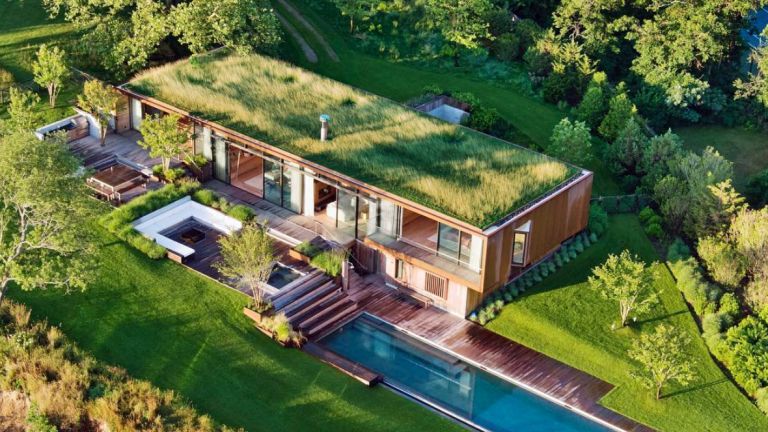
Top 10 Eco House Ideas – Complete Guide for Eco Houses
Nowadays we all know how important it is to be Eco house, and we do simple things, such as recycling rubbish, without really giving it much thought. When we look at the bigger picture, several ways can make a huge difference in helping us learn about our home environment and promoting a more eco friendly way of living. We will discuss Eco House ideas in this blog post.
What does it mean to build an Eco house?
It’s an environmentally-friendly house designed with as little impact on the planet as possible.
What does that mean? Our homes burn fossil fuels, causing climate change. In Eco-friendly homes, renewable energy sources, energy efficiency, and natural materials are used.
10 Eco House Idea:
1- Invest in solar panels
Solar panels are an essential function for Eco-homes. Providing clean power can even generate enough energy to sell it back to the grid. Solar panels are a long-term investment, and it has been suggested that it will take around 10 years to reach the break even point, depending on where you live. But do not forget that this is not only a financial investment but also an environmentally friendly opportunity.
2- Under floor heating installation
Although many people aren’t bothered by radiators or heaters, some would prefer a minimal approach to their home heating. Installing underfloor heating can help save you some money. Although often associated with newly built homes, it can also be installed in older homes.
3- Recycled products
Whenever possible, it is a good idea to purchase recycled products. This can range from toilet tissue to kitchen rolls. If a recycled option is available, it’s worth buying it. Besides recycled paper, you can also buy reclaimed technology like mobile phones, gaming consoles, and even stairlifts.
4- Harvesting rainwater
Rainwater harvesting is storing rainwater during the monsoon season for later use. Rainwater can be collected from rooftops or rain barrels/cisterns for individual homes. It is an essential feature of sustainable homes. It’s important to remember that rainwater should never be used before being treated.
5- Double-glazing your windows
Nowadays, there is no reason not to have your entire home’s windows glazed in this manner – gone are the unattractive days of double glazing. It will also reduce energy costs and keep your home well insulated in the long run.
6- Use natural cleaning products
Chemical cleaning is equally harmful to the environment and us. Washing them away puts them back into the water supply. Water must then undergo a purification process before it can be used again. Water bodies are sometimes polluted with these chemicals, making them unfit for human consumption and unsafe for animals. Conventional cleaning products can lead to chemical burns of the skin and eyes. Cleaners made from green ingredients are non-corrosive and meet strict inhalation toxicity, combustibility, and skin absorption standards.
7- Cook smart
Use your appliances and consider how you use them. When you have the oven on to cook dinner and keep opening and closing it to check on the food, you’d be shocked at how much heat you lose and how long it takes to get back to the optimum cooking temperature. Cooking in halogen ovens is popular. There is no need to preheat; they can cook food a quarter of the time, and they don’t waste too much energy.
8- Maintain your boiler regularly
The newest boilers on the market are much more heat and energy-efficient than older boilers. They still need to be serviced regularly to keep them in top condition. Old boilers are still in good condition and will work if used wisely. However, it is recommended to update the boiler approximately every 10 years.
Likewise, pay attention to the temperature at which the thermostat is kept, and lower the thermostat a few degrees to save money and keep the thermostat working correctly. You can make significant adjustments to your energy bill with just one drop.
9- Energy saving light bulbs
Repairing energy-saving light bulbs in your home is easy to implement sustainable building design carefully. Energy-efficient lighting deliberately utilises more sunlight with optimum window placement, while artificial lighting ensures minimal power usage when required.
Lighting sensors are another excellent way to reduce lighting costs. The sensor adjusts the brightness, uses it as needed, and turns on and off and dims when entering and leaving the room. Great for people who forget to turn off the lights.
10- Cleaning with a green mindset
There are certain detergents and cleaning products we have used over the years and never thought about the damage they could do to the environment. Draining them into sewers results in them flowing into the water supply, often requiring extra energy and effort to re-purify the water.
Simple adjustments can be made. Baking soda, lemon juice, and vinegar can be used instead of bleach and detergent to kill bacteria and leave no oil or odour in the home.
Final Thought
We provide this blog only as general information. Hopefully, these Eco-House ideas have inspired you to make more thoughtful decisions before, during, and after the construction of your new home.